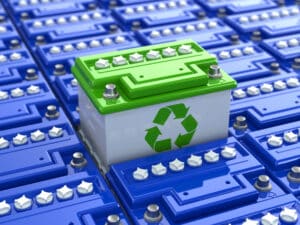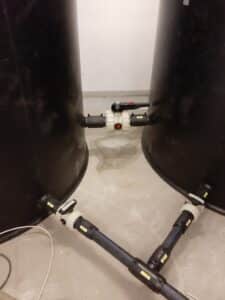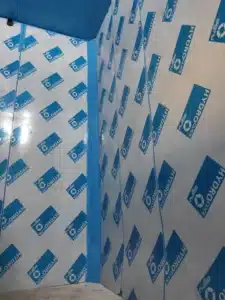The purpose of the project was to install a ventilation pipeline system capable of making a Clean Room facility work. These types of conditions are often required in industry fields like Pharmaceutical, Electronics and Food. The main point of conflict is the size of the building, which will require a huge air flow and in consequence large pipe diameters.

MATERIAL SELECTION
Given the application requirements, the use of plastic over other material families was evident, as plastics can offer a longer service life and can minimize the risk of corrosion and contamination at the site. The Fluorotech range of materials for ventilation pipes is composed by: PE, PP, PPs, PVC, PVDF and ECTFE. PE and PVDF are intended for outdoor applications, especially with Finnish weather conditions. PP, PPs and PVDF are suitable for applications with high temperature and chemical resistance. PVC is an easy-to-install solution for pipelines that do not need special thermal requirements. ECTFE is mainly used with aggressive exhaust air.
The material used in this project was the low-flammability polypropylene (PPs), a PP homopolymer which is equipped with a flame retardant. PPs is hydrolysis resistant, it means it will operate well in hot water and when exposed to steam environments. Apart from this, it offers high stiffness and it is a very light material. Therefore, it is suitable to produce large pipe diameters at relatively low weights. However, it may not be used for outdoors applications due to the missing UV stabilization.

MATERIAL SUPPLY
Fluorotech pipes and fittings are manufactured by some of the most renowned corporations in the plastic pipeline market. In this project, the materials were supplied by HoKa, a German company with more than 30 years of experience in the ventilation piping market, and AGRU a world-known manufacturer located in Austria. In the projects where large diameters pipes are used, the pipe supports play a major role. The distances between these supports were calculated based on DVS standards and this information was then checked by Müpro, the pipe supporting manufacturer.

INSTALLATION
The installation was run by one of Atolli’s teams. Atolli welders carry on years of experience, they have all been trained and tested by external institutions. For this reason, they know the perfect parameters for each welding procedure. In this project, the welding methods used were extrusion welding and hot air welding. Extrusion welding is the most suitable technique for large pipe diameters, but required well-trained welders that ensure the best quality on the seams. This technique consists in continuously extruding molten plastic (same material as parts to be welded) into a prepared joint between the parts, using an extrusion-welding gun.







